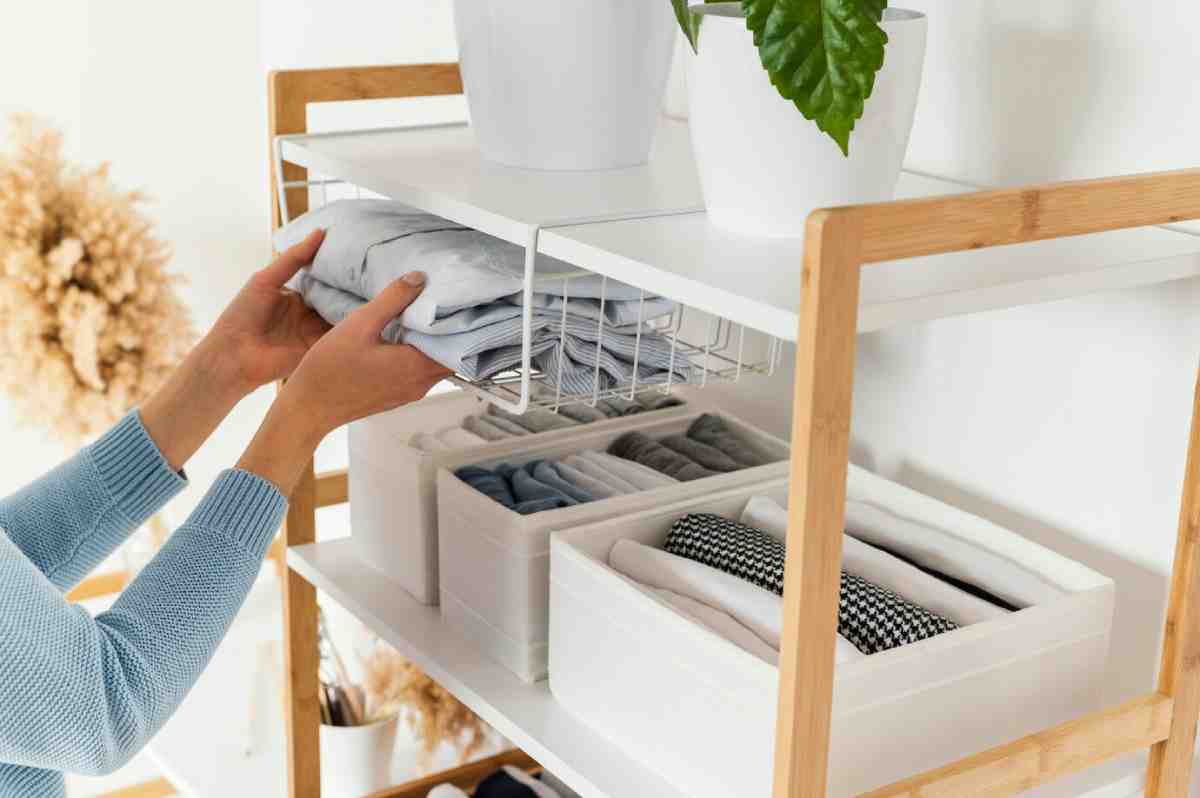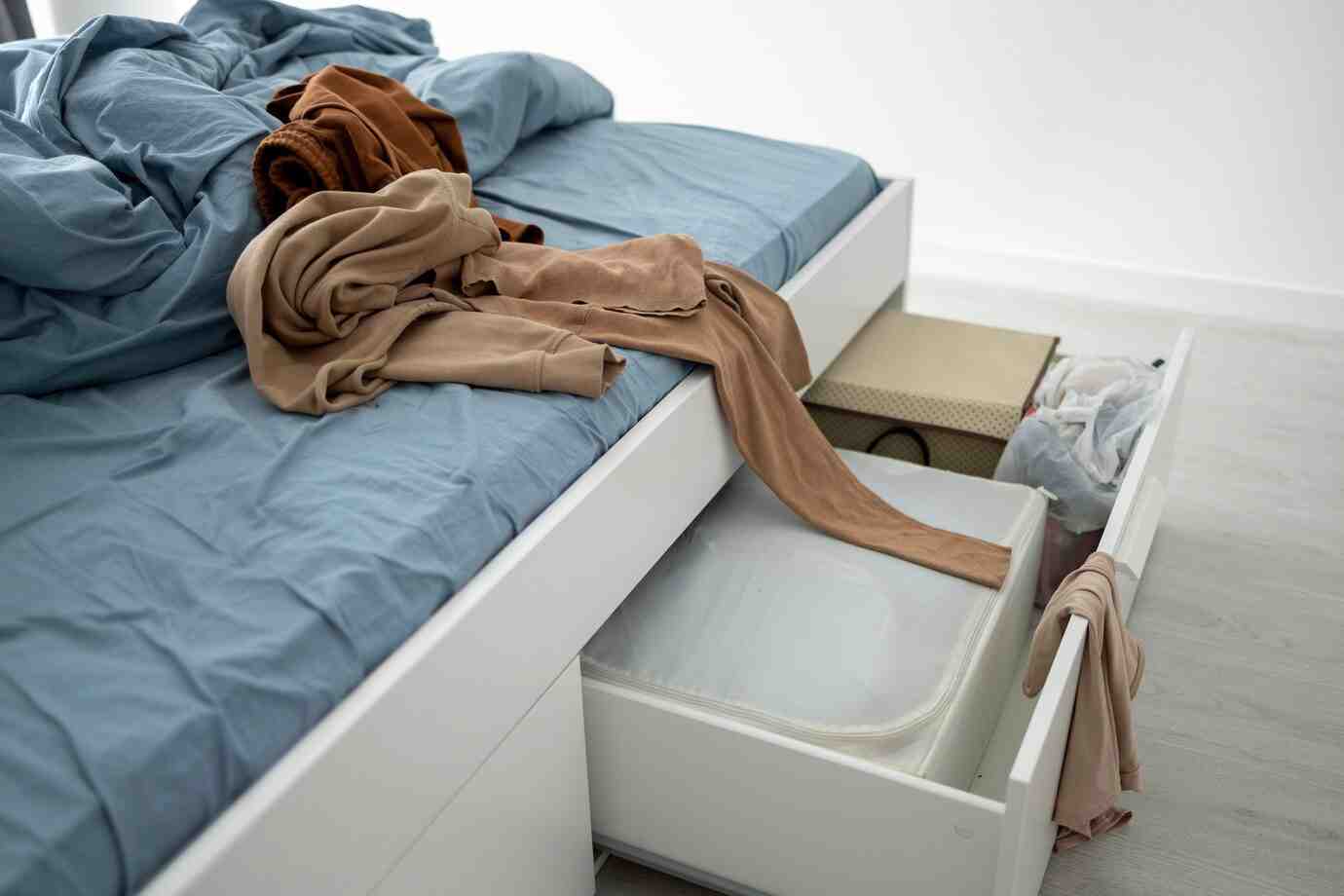
Gratitude Practices in the KonMari Journey
More Than Just Tidying Up
What if tidying your home could also tidy your mind? Imagine stepping into your space and feeling a quiet joy instead of a wave of overwhelm. That’s what the KonMari method offers—but it’s not just about folding your socks into perfect rectangles. At the heart of this world-renowned approach is something far more powerful: gratitude.
In this blog post, we’ll look at how gratitude and decluttering work together in the KonMari journey. We’ll unpack how simple, mindful organising rituals can elevate your home and mindset alike. If you want to create a calm, purposeful space and focus on what matters, this is for you.
By the end of this post, you’ll understand:
- Why gratitude is essential to the KonMari method
- How to practise mindful decluttering with emotional clarity
- Ways to develop personal home gratitude rituals
Let’s clear the clutter—both physical and emotional—and bring more peace into your home.
The KonMari Method: A Brief Refresher

Marie Kondo’s KonMari method became a global phenomenon thanks to its emphasis on keeping only items that “spark joy.” There’s a deeper philosophy to this method: gratitude. We should appreciate the items we own and the roles they play in our lives.
Before parting with an item, KonMari practitioners are encouraged to thank it, whether it’s a jumper you wore to your first job or a mug that once warmed you on a cold morning. This simple act transforms decluttering from a cold purge into a mindful, emotional experience.
The Philosophy of Mindful Organising
KonMari differs from traditional organising systems. While those focus on efficiency and function, KonMari invites you to form an emotional bond with your belongings. The goal isn’t minimalism for minimalism’s sake—it’s to cultivate joy and mindfulness.
In short, mindful organising invites you to:
- Reflect on what you truly value
- Recognise your home as a reflection of your inner life
- Honour transitions by letting go with intention
This is where gratitude and decluttering intertwine.
Why Gratitude is a Game-Changer When Decluttering
Gratitude shifts your mindset from loss to appreciation. Instead of focusing on what you’re getting rid of, you focus on what the item brought to your life.
Emotional Healing Through Letting Go
Many of us hold onto things out of guilt, sentimentality, or fear. A gift from a friend, even if it’s unused. A dress that no longer fits but reminds you of another era. Letting go can feel like erasing memories or disrespecting relationships.
But practising gratitude gives you emotional permission to let go. By thanking the object, you:
- Acknowledge its role in your journey
- Honour the memory without needing the object
- Shift your focus to the present, not the past
This approach is what makes mindful organising feel healing rather than harsh.
Building a Mindset of Abundance
When you practise gratitude while decluttering, you also affirm that you have enough. This fosters an abundance mindset, replacing fear or scarcity with peace.
It becomes easier to say:
- “I enjoyed this for what it was.”
- “I’m ready for the next chapter.”
- “My home deserves only what supports who I am now.”
Practical Ways to Incorporate Gratitude into Decluttering
Gratitude doesn’t have to be grand. Here are tangible ways to weave it into your KonMari sessions:
Start with a Gratitude Intention

Before you begin decluttering, pause. Take a few breaths and set an intention of gratitude. For example:
“Today, I honour my home and let go with appreciation.”
This centres your mind and opens you to a more compassionate process.
Thank Each Item Before Letting It Go
This is a core KonMari ritual. When you decide to part with something, simply say:
“Thank you for serving me.”
You might add a specific reason, like:
- “Thank you for keeping me warm.”
- “Thank you for teaching me what I don’t need.”
It might feel awkward at first, but it truly transforms the process.
Create a Gratitude Journal for Your Home
After a decluttering session, write down a few reflections:
- What did I learn about myself today?
- What items am I grateful for and why?
- How did this session shift my mood or clarity?
This helps reinforce the emotional benefits and encourages ongoing mindfulness.
Involve the Whole Family
Invite children or partners to express thanks before parting with toys, clothes, or gadgets. This models emotional intelligence and makes the process more meaningful for everyone.
End Each Session with a Thank-You to Your Space
Once you’re done, take a moment to stand in your tidied area and say:
“Thank you, home, for holding me.”
Yes, it may feel sentimental. This practice grounds you in appreciation and respect.
Creating Personalised Home Gratitude Rituals
Beyond decluttering, consider introducing ongoing rituals that connect you with your space.
Daily Mini Rituals
- Light a candle at the start of your day
- Open windows to greet the morning air
- Say “thank you” when making your bed or tidying a surface
These moments add up to a more intentional, nurturing relationship with your home.
Seasonal Gratitude Practices
As seasons change, take time to:
- Reflect on what the past months taught you
- Rearrange or redecorate with seasonal elements
- Release items that no longer serve your current lifestyle
This keeps your home dynamic and aligned with your life.
Celebrate Decluttering Milestones
Finished the wardrobe? Cleared the kitchen drawers? Mark the moment!
- Light a celebratory incense
- Share before-and-after photos
- Write a thank-you note to yourself
These acts reinforce the emotional journey and motivate you to continue.
Case Study: Emma’s Story – Finding Clarity Through Gratitude
Emma, a 39-year-old teacher and mum of two, always felt her home was a bit chaotic. Clothes piled up, drawers were crammed, and surfaces never stayed clear for long.
After finding the KonMari method in a documentary, she chose to try it. But she added her own twist: she focused on gratitude.
Each weekend, she tackled one category. As she went, she thanked every item she parted with. At first, she felt silly. But after a few weeks, she noticed something powerful:
- Her mood lifted
- Her anxiety decreased
- Her kids even began picking up on the habit
“It felt less like getting rid of stuff and more like making space for what matters,” she said.
Today, her home feels lighter, and so does she.
Why Mindful Decluttering Isn’t Just About Stuff
Ultimately, the KonMari method—when infused with gratitude—becomes about intention, awareness, and self-respect. It’s not just about having less. It’s about making more room for joy, clarity, and peace.
When your environment is a reflection of what you cherish, your life begins to align with your values. Decluttering becomes not a chore but a form of emotional wellness.
So if your home feels cluttered, consider this: maybe it’s time to not just tidy—but to give thanks, and to let go with love.
Conclusion: Make Space, Make Peace

Decluttering with gratitude transforms your home and mindset. It teaches you to see your possessions not as burdens but as companions on your life journey. By letting them go mindfully, you make space for what truly supports your present and future.
The KonMari method isn’t about strict rules—it’s about deep respect. For your home. For your story. And most importantly, for yourself.
So the next time you feel overwhelmed by clutter, try this: take a breath, say thank you, and begin again.
Have you tried incorporating gratitude into your decluttering routine? Share your thoughts or stories in the comments below—let’s inspire each other.


